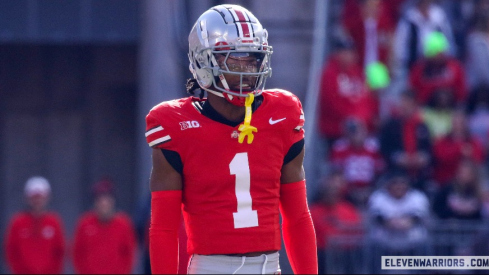Conference expansion has already crushed the Big East and is threatening the work ethic of various athletic departments.
Last week, ESPN reported ACC athletic directors and coaches are discussing the possibility of scheduling fellow ACC schools as non-conference opponents. Florida State has enough trouble convincing powerhouse programs like The Citadel to come to Tallahassee, so that would certainly make it easier on their AD.
In reality, their line of reasoning is that certain ACC schools will only play each other once in a span of 11 years (e.g. Duke and N.C. State). Following similarly flawed logic, ESPN also reported Big Ten athletic directors are considering the concept of adding league opponents in non-conference games.
What makes this a more perplexing idea for the B1G is teams will play a nine-game conference schedule beginning in 2016 and, as a result of the schedule rotation, every Big Ten school will play each other at least once every four years.
The Big Ten banned scheduling FCS opponents, which conference athletic directors can use as an excuse to fuel their laziness in scheduling future non-conference opponents. The only possible benefit of scheduling Big Ten teams in the "non-conference" is the revitalization of some of Ohio State's chief rivalries, which are no longer annual or even bi-annual affairs.
Wisconsin
Despite their status as the Big Ten's paper tiger dynasty, the yearly game against Wisconsin was the biggest challenge on the Ohio State schedule.
A season ago, the Buckeyes had to fend off a late charge (or a second half nap, as it were) to even get to Indianapolis. In 2012, the eight-win Badgers basked in the glow of OSU's postseason ban, as they went on to "win the Big Ten." The result of the 2011 game is seen above, while 2010 ended any national title hopes for the Buckeyes.
Animosity developed over that span, but it will soon dissipate. Wisconsin hosts Ohio State 2016 and the Badgers return to Columbus in 2019. Those are the only two games currently scheduled between the schools, in what was an annual matchup to determine the fate of the Big Ten.
Illinois
A temporary, two-year hiatus put a halt to the series in 2003 and 2004. Before that, Ohio State and Illinois met every season for 88 consecutive years.
It is deemed a rivalry because of the aptly-named wooden turtle, but the game's tradition can't be ignored – except, the Big Ten is making every effort to ignore it. The history between the Illini and Buckeyes is what makes the fabric of college football unique from any other sport.
Illinois is currently an affront to the history of college football. They haven't been this bad since the 1970s, but we could always count on Champaign's wind-tunnel destroying any Ohio State QB's confidence. They'll play the next two years, but will sporadically appear on the schedule as long as the conference's current structure stays in place.
Purdue
Separating Ohio State and Purdue might be the only welcomed move of conference expansion.
The series survived three interruptions in the early and late 1990s, as well as the mid-2000s. During that time, the Buckeyes were not able to extricate their West Lafayette demons, losing in 2004, 2009 and 2011. Still, Ross-Ade Stadium provided one of the most enduring OSU moments of all-time, thanks to Craig Krenzel, Michael Jenkins and one of Jim Tressel's rare, ballsy play calls.
Purdue has never provided a dull moment in their history against Ohio State, but placing the two schools in separate divisions is one way to ensure we can't "get used to it." We should thank the Big Ten, as, over the next six seasons, the Boilermakers appear on the schedule only once – in 2018.


